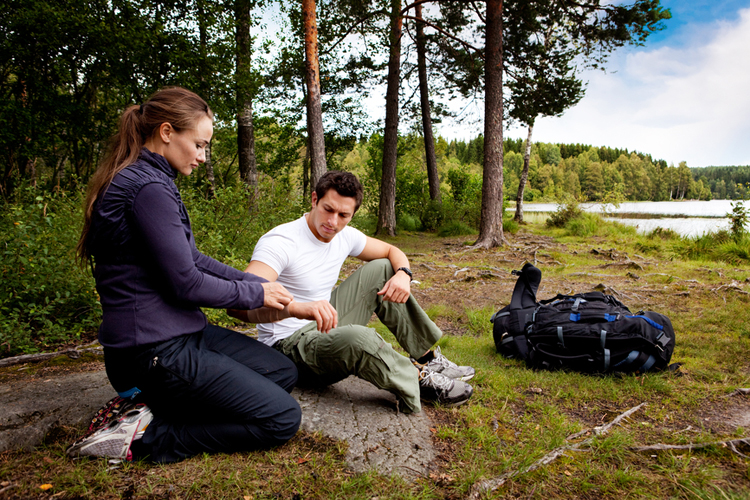A bandage! A bandage! My kingdom for a bandage!
Possibly that’s a little dramatic, but sometimes it’s the lack of small things that make the biggest dent in our day. Have you checked your first aid kit lately?
First of all, you need to have one. Soft-side kits are lightweight and don’t take up too much space in your RV or camp pack. A ready-made kit is a great place to start, but be sure you’re familiar with what’s in there and how to use it. The time to familiarize yourself with the contents is probably not when your grandchild is crying about the bee sting, or your watering eye has slammed shut because you got campfire ash in it. There should be a list of contents with the kit, but if not, just open it up and take a good look. Now, while there’s no campfire ash in your eye.
After you’ve familiarized yourself with the contents, consider who is in your camping party. Anyone have asthma? Prone to low blood sugar or serious sunburn? The most common problems are bug bites and stings, cuts and scrapes, sunburns and allergy reactions – everything you would expect from camping. But your group may have specific needs, so add accordingly. For campers with particular health issues, you may want to put together a special care kit just for them.
Other additions you might consider if not provided in your kit:
A thermometer. If you camp in winter or in the mountains, you may want a special thermometer that measures the low temps of hypothermia, too.
An emergency first aid booklet.
Even if you know what to do, all your sound judgement can go out the window in a medical drama. Sometimes seeing a chart or visual can snap you back to logical thinking and help get you through the necessary care steps. For example, RICE: Rest, Ice, Compression, Elevation – is easier to remember for sprains and strains than a general medical chapter, and seeing the word may be all it takes.
Resealable plastic bags and small rectangular kitchen sponges make great ice packs. Wet the sponge, place it in a sealed baggie and store it in the freezer of your RV or cabin or in the ice chest at your campsite.
Colorful (or cartoon character) band-aids. These have (ahem) magical healing qualities for a small child. Even a colorful bandage placed on SOMEONE ELSE has been known to heal the boo-boos of little children. No point in questioning the magic, just go with it.
Bottle of saline. This can be handy for flushing irritants from eyes, clearing debris from a wound, or in spray form, can clear those hay fever allergens from your poor abused nasal passages (but if you use it for this purpose, one user per bottle, please).
Finally, don’t forget to replace used items periodically to maintain your kit. Also, depending on how long you’ve had it, check the expiration dates of aspirin, antibiotic ointments, first aid creams etc. and replace any that are no longer effective.
For more on the subject, there’s a first aid checklist at
http://camping.about.com/cs/advicetips/a/firstaid01.htm. Here’s hoping you never need to open that first aid kit at Millwood Landing RV Park. If you do, though, you’ll be ready!

